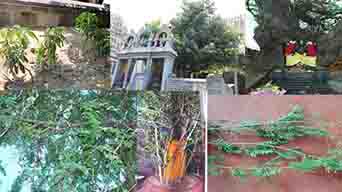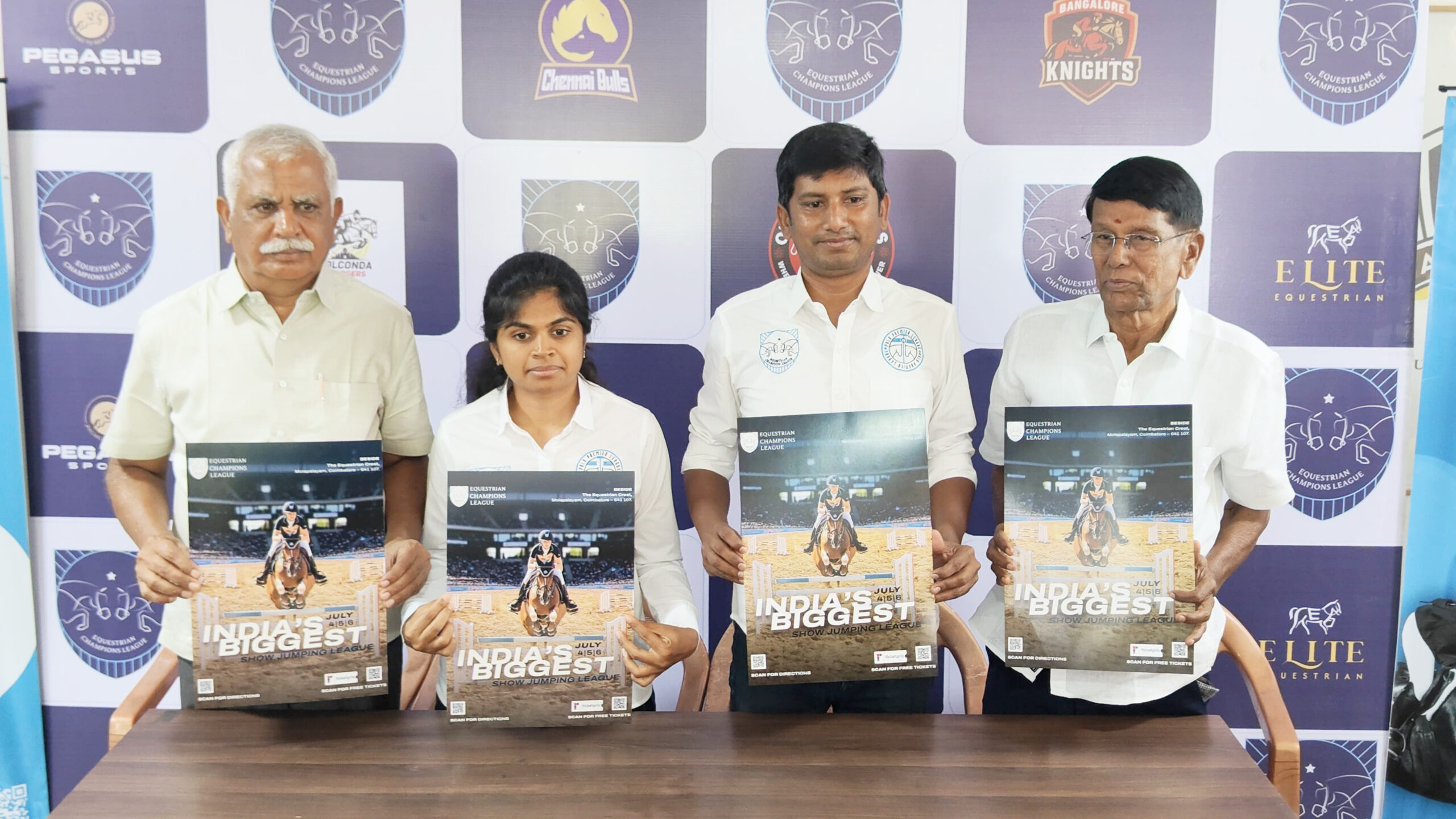Trending Now
- “If Edappadi Palaniswami permits, a thousand young members from the Virudhunagar district AIADMK are prepared to take up arms and engage in battle under my command.” – Former AIADMK Minister Rajendra Balaji
- “India is ready to deal with any counter-attack by Pakistan” – Wing Commander Vyomika Singh
- Central govt orders extension of CBI Director Praveen Sood’s tenure for another year
Columns
Dire need to resuscitate the burning, ill-maintained Sthala Vrikshas
![]() April 7, 2018
April 7, 2018
The recent news that the Sthala Vriksha (sacred temple tree) of Tiruvalangadu Siva temple caught fire shows the scant regard we have for preservation of our ancient culture and civilization. Hinduism has nature worship as a key aspect from times immemorial.
Usually, every temple has three features – Sthala, Teertha and Murthy. Sthala refers to the place where the temple is constructed. Teertha to the temple tank and Murthy to the deity(ies) worshipped.
Conservation of rare trees and plants is important item in the ‘Green Agenda’. There are trees, some more than a thousand years old in temples which are worshipped as ‘Sthala Vrikshas’. This was an attempt of our ancestors to conserve rare species. We were ecologically aware long before the West.
I had realised their importance in 2002. Three such trees which were on the verge of dying have been revived. They have been conserved and reproduced by cloning so that the original characteristics are retained in full. Despite emphasis in the Policy Note on Agriculture in the year 2004-2005 of the Tamil Nadu Government and repeated in the Policy Note of the Hindu Religious & Charitable Endowments Department in 2014-2015, incidents like cutting of such trees or worse burning takes place.
Pilot Project
Three famous trees which are ancient and extremely important that have been revived and saplings created by cloning are the Mango tree in Ekambareshwara Temple, Kancheepuram, the Vilva tree at the Samadhi of Saint Sadasiva Brahamendra in Nerur near Karur and the Vanni tree in Kodumudi, Erode District.
This work was done when I was heading the Agriculture department as Commissioner and later as Secretary by the late Thiru R. Balasubramanian, Assistant Research Officer, Soil Testing Laboratory of the Department of Agriculture in 2004 at my instance. He died in 2012. His dedication was such that he continued the work even after retirement.
Mango Tree (Sri Ekambareshwara Temple, Kancheepuram)
The mango tree grown inside the ‘inner-prakaram’ of the temple is 3500 years old. It has different types of fruits in different branches. The four branches in the ancient mango tree yielded mangoes in four different tastes and shapes viz. sweet, sour, bitter and astringent (thuvarpu in Tamil) taste. I have seen Muslim and inter religious couples worship here. A Muslim girl tied bangles and also a baby’s swing to the tree branch. Her husband was present.
The Sthala Purana states that the Devi Kamakshi Amman did penance under the tree in front of a Shivalinga made of sand moulded by her with her own hands.
Two decades ago, the tree started shrivelling up. It was dying. I noticed it during a visit to the temple in 2002. We took tissue samples for cloning. We made saplings and hardened them. Then they were planted around the old tree. There are several such saplings that can be seen. Some are taken and planted in the Nandavanam (garden). In the meantime, the old tree was rejuvenated by using proper soil testing, manuring, and treatment etc. This was done from December, 2002 onwards.
The efforts were successful. The old tree has started its second life. In 2014, the sacred mango tree, after a gap of a few years, started yielding mangoes again. It continues to yield mangoes.Devotees now worship it. 3500 years of history has come alive.
Sacred Vilva (Aegle marmelos) trees (Sadasiva Brahmendra’s Adhistanam at Nerur near Karur)
Nerur is on the banks of the River Cauvery. The vilva tree which symbolized Sadasiva Brahmendra’s spirit is planted on his Samadhi i.e. Adhishtana. Sadasiva Brahmendra was a great Avadhuta saint (those who do not wear clothes). One of his disciples was the Pudukottai Raja Sri Vijaya Raghunatha Tondaiman (circa May 1713 – 1769). Sadasiva Brahmendra attained Mahasamadhi at three places simultaneously. As an apparition at Karachi to please his Muslim devotee and a Vedic Pandit at Manamadurai and bodily in Nerur. In pre-partition days, the Samadhi at Karachi was intact and visited by his devotees.
As per Brahmendra’s statement just before Mahasamadhi, a Vilva shoot sprouted on the ninth day and a Banalinga arrived from Banaras on the twelfth day. The Bilva tree in Nerur has three branches symbolising Brahma, Vishnu and Siva.
The Vilva tree almost died in 2003 when I saw it. Narayana Upadhyaya, the priest claimed that Sadasiva Brahmendrs himself had stated that it would need revival after 250 years from the date of the Mahasamadhi.
In 2003-2004, efforts were taken to revive the tree. It revived. The platform of cement built around the tree was removed and fresh soil from nearby was put. The cloned saplings are in plenty on the platform and nearby. Shri Upadhaya sent a letter dated 10.08.2004 in which he records its revival and wanted me to help. This letter is scanned and attached to this article. Seeing is believing.
Vanni Tree (Sri Magudeshwara Temple, Kodumudi)
Kodumudi temple is an ancient Temple on the bank of the Cauvery river. It has the deities of Brahma, Magudeshwarar (Siva) and Veeranarayanapperumaal (Vishnu). Locals believe the Vanni tree is 3000 years old. It was dying. It has three branches representing Brahma, Vishnu and Siva. Prosopis Cineraria is the botanical name.
The tree has thorns on one half and is thornless on the other half. It does not flower or bear fruits. It was resuscitated in the year 2004. It was revived and is giving out shoots, branches and fresh leaves after treatment by the Agriculture department. The cloning was carried out in 2002 -2004 by the Agriculture department which revived it. But the saplings created by cloning were nowhere to be seen in 2013 when I visited it as Principal Secretary in charge of the Tourism, Culture and Religious Endowments department in charge of temples. This shows how the temple administration neglected it out of ignorance. Cloning for saplings was again repeated from 2014 onwards at my instance. The Forest Department under Thiru Balaji, I.F.S, and Thiru R.K. Upadhayay I.F.S. took specialefforts. 200 clones were created by tissue culture. Only one has survived in 2017. It is stated that the tree due to age has become sterile and partially fossilised. The surviving Clone has to be carefully tended. The Forest Department has included this in the list of 50 heritage trees in Tamil Nadu due to the efforts of Thiru Upadhyaya IFS.
Action for the future
The Paramacharya of Kanchi once told a devotee that to revive a Vilva tree there should be fresh soil, cow dung manure etc. This writer used Panchagavya and Mutkaguard as organic nutrient and bio-pesticide. Cement platform should not be created around such trees as the roots will die due to not breathing. The leaves should not be plucked as in Kodumudi as this will make the tree leave this world.
Even on 27.11.2014, Government issued instructions Sthala Vrikshas should be carefully taken care of by the Executive Officers and Hereditary Trustees for making clones carefully quarantined in a separate place so that they do not mix with the outside plants of the same or similar species.
There should be a prominent signage giving the Tamil, English, Sanskrit and Botanical names with the legend associated with the tree and its properties both physical and as per mythology. The board should also state when it was cloned etc. It is the fervent wish of every responsible person in the world that these instructions are carried out and not ignored. NGOs can take up this as a movement.
If the thousands of temples take care of their sacred trees, it would be a great service to the Green Movement.
The author is Dr.R.Kannan, I.A.S. Retired Additional Chief Secretary, Tourism, Culture ; Religious Endowments, Government of Tamil Nadu.
Disclaimer: The views expressed above are the author’s own






















